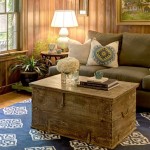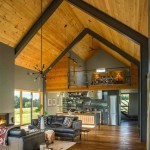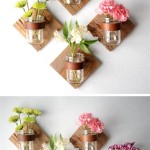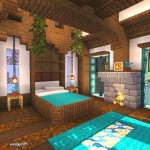How To Decorate a Living Room With String Lights
String lights, also known as fairy lights or twinkle lights, are a versatile and accessible decorating element that can transform the ambiance of a living room. Their soft glow and customizable arrangements offer a unique opportunity to create a warm, inviting, and personalized space. The following guide provides a detailed exploration of various approaches to incorporating string lights into living room decor, encompassing diverse styles, practical considerations, and safety precautions.
Selecting the appropriate string lights is the initial step in the decorating process. String lights are available in a wide array of styles, including incandescent, LED, and solar-powered options. Incandescent lights provide a traditional warm glow but are generally less energy-efficient than LEDs. LED string lights are a popular choice due to their energy efficiency, longer lifespan, and availability in various colors and brightness levels. Solar-powered string lights are suitable for areas with access to direct sunlight and offer a sustainable alternative to traditional power sources.
The length of the string lights should be carefully considered based on the intended application. Measuring the area where the lights will be placed is crucial to ensure adequate coverage and avoid unsightly dangling wires. The bulb size and spacing also impact the overall aesthetic. Smaller bulbs create a delicate, subtle glow, while larger bulbs offer a bolder, more prominent effect. The color temperature of the lights, typically measured in Kelvin (K), influences the mood of the room. Warmer temperatures (2700K-3000K) create a cozy and inviting atmosphere, while cooler temperatures (4000K-5000K) offer a brighter, more modern feel.
Power source management is a crucial aspect of string light installation. Extension cords should be used sparingly and should be rated for the appropriate voltage and amperage. It is advisable to conceal extension cords and power strips to maintain a clean and organized aesthetic. Battery-operated string lights offer a wireless option for areas where access to electrical outlets is limited. However, battery life should be considered when selecting this option.
Draping String Lights Along Architectural Features
One effective method for incorporating string lights is to drape them along architectural features such as mantels, shelves, and window frames. This approach highlights the existing structure of the room while adding a touch of warmth and whimsy. When draping string lights along a mantel, ensure the lights are securely fastened to prevent them from falling. Consider weaving the lights around decorative objects to create a cohesive and integrated display. Similarly, string lights can be draped along bookshelves to illuminate the objects on display and add a subtle ambient glow.
Window frames offer another opportunity for creative string light placement. Securing the lights along the perimeter of the window frame can create a visually striking effect, especially during nighttime hours. Consider using suction cups or adhesive hooks to attach the lights to the window frame without causing damage. The arrangement of the lights can be varied to achieve different effects. For example, a simple, straight line of lights can create a clean and modern look, while a more organic, meandering arrangement can add a touch of bohemian flair. The reflection of the lights in the windowpane can further enhance the ambiance of the room.
When draping string lights along walls, opt for lightweight options that are easy to manage and secure. Avoid using nails or tacks that could damage the wall surface. Instead, consider using adhesive hooks or clips that are designed for temporary mounting. Arrange the lights in a pattern that complements the existing decor. For example, a series of horizontal lines can create a sense of order and symmetry, while a more random arrangement can add a touch of playfulness and informality.
Creating a String Light Canopy or Feature Wall
For a more dramatic effect, consider creating a string light canopy or feature wall. A canopy can be created by suspending string lights from the ceiling to create a focal point in the room. This approach is particularly effective in larger living rooms with high ceilings. Use lightweight string lights to minimize the stress on the ceiling. Secure the lights to hooks or anchors that are rated to support the weight. The density of the canopy can be adjusted to achieve the desired level of illumination and visual impact.
A string light feature wall involves arranging string lights in a specific pattern or design on a wall. This approach can be used to create a striking visual statement that draws the eye and adds character to the room. Consider using a combination of different bulb sizes and colors to create a more dynamic effect. The pattern can be simple and geometric or more complex and abstract. Secure the lights to the wall using adhesive hooks or clips. Be sure to plan the design carefully before installation to ensure a cohesive and visually appealing outcome. Consider using a template or stencil to guide the placement of the lights.
Alternatively, string lights can be combined with other decorative elements to create a unique feature wall. For example, placing string lights behind sheer fabric panels can create a soft, diffused glow. Similarly, string lights can be incorporated into a gallery wall to highlight artwork and photographs. The possibilities are limited only by imagination and creativity.
Incorporating String Lights into Existing Decor
String lights can also be seamlessly integrated into existing decor to enhance the overall ambiance of the living room. Wrapping string lights around houseplants can add a touch of whimsy and create a focal point. Choose plants with sturdy branches that can support the weight of the lights. Be careful not to damage the plant when wrapping the lights around the branches. Ensure that the lights do not obstruct the plant's access to sunlight or water.
String lights can also be used to illuminate decorative objects such as vases, sculptures, and mirrors. Placing string lights inside a clear vase can create a stunning centerpiece. Similarly, wrapping string lights around a sculpture can highlight its form and texture. Placing string lights behind a mirror can create a sense of depth and dimension, as well as enhance the reflection of light in the room. Consider using battery-operated string lights for decorative objects that are not located near electrical outlets.
Another approach is to incorporate string lights into curtains or window treatments. Weaving string lights through the fabric of curtains can create a soft, ethereal glow. This approach is particularly effective with sheer or lightweight fabrics that allow the light to pass through. Ensure that the lights are securely attached to the curtains to prevent them from falling. Consider using clips or fasteners that are designed for this purpose. The color of the lights can be chosen to complement the color of the curtains.
Safety is paramount when decorating with string lights. Ensure that the lights are rated for indoor use and are in good working condition. Inspect the lights for any frayed wires or damaged bulbs. Avoid overloading electrical circuits. Use surge protectors to protect against power surges. Never leave string lights unattended for extended periods of time. Turn off the lights when leaving the room or going to bed. Keep string lights away from flammable materials such as paper, fabric, and curtains. Follow the manufacturer's instructions for proper installation and maintenance. When using outdoor string lights indoors, ensure they are properly cleaned and inspected before use.
The placement of furniture within the living room can influence the impact of string lights. Arranging seating around a string light feature can create a cozy and inviting conversation area. Utilizing light to accent certain items, such as a reading chair in a quiet corner enhances the intended purpose of the zone. In general, well-placed string lights can visually expand the space and make it feel less cramped.
The choice of light intensity and color plays a significant role in setting the desired mood. Warmer hues often create a relaxed and intimate setting, while cooler tones can evoke a modern and energetic atmosphere. Some string light sets include dimmers, which allow for adjustable brightness, permitting tailored lighting to suit various activities, such as watching a movie or hosting a gathering. It's crucial to consider the existing light sources in the room and adjust the string lights accordingly to achieve a balanced and harmonious illumination.
Regular maintenance of string lights involves dusting the bulbs to ensure optimal brightness and inspecting the wiring and connections for any signs of damage. Replacing burnt-out bulbs promptly is essential to maintain a consistent light output and prevent potential electrical hazards. Storing string lights properly when not in use is crucial to prolonging their lifespan. Coil the lights neatly and store them in a dry place, away from direct sunlight and extreme temperatures.

Pin On Home Styling

25 Cozy String Lights Ideas For Living Rooms Digsdigs

25 Cozy String Lights Ideas For Living Rooms Digsdigs

45 Inspiring Ways To Decorate Your Home With String Lights

Pin On Living Room

38 Cozy Decor Ideas With Bedroom String Lights

How To Decorate Your Apartment With String Lights Inspired By Anna
:strip_icc()/11385582_401950466671779_321041104_n-29d12c0d8bed4053b6cc09948073851b.jpg?strip=all)
The Best String Light Decorating Ideas We Saw On Instagram

20 Creative Ways To Decorate With String Lights Year Round

25 Cozy String Lights Ideas For Living Rooms Digsdigs
Related Posts







